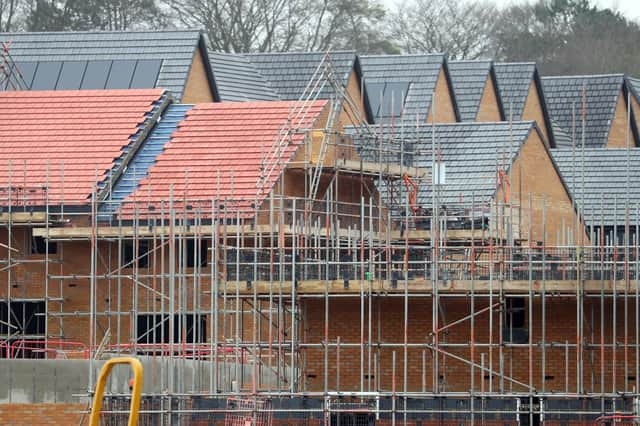Capital facing impossible jobs and housing conundrum - John McLellan


It was the same story from West Edinburgh residents arguing against planning applications for the new housing estates now spreading west of the Maybury Road. The lack of school places was very much a concern too.
Savy locals read the news too and promises of new health centres and schools buttered no parsnips because they knew staffing facilities was as much an issue as building them. And nothing has changed.
Advertisement
Hide AdAdvertisement
Hide AdBut according to a report for last week’s City of Edinburgh Council housing committee, the city needs a minimum of 36,000 new homes by 2040, 24,000 of them affordable. The upper estimate is 52,000 in total. It’s an impossible conundrum; Edinburgh needs thousands more houses for a growing population, but the growth is seemingly insufficient to provide enough staff for essential services.
The answer, according to an SNP motion to today’s full council, is more immigration and policies “which better meet Edinburgh’s needs,” but having just declared a “housing emergency” it seems somewhat contradictory to encourage more people to come here when the city quite clearly can’t cope with what it’s got.
A look at the most up-to-date National Records of Scotland migration statistics, admittedly a couple of years behind, illustrates the problem. In the Edinburgh Council area 1,380 more people left than arrived in 2021, but Lothian Health Board area data shows 40,570 people arrived, 12,820 of them from abroad, and 36,950 left, just 5,790 of them for overseas. The net growth was in the four neighbouring council areas, including Fife, which experienced net immigration of over 1,000 each. Therefore, Edinburgh’s population boom is home grown but the increasingly expensive city is outsourcing its housing and workforce.
It’s not going to get any easier, because last week’s housing committee report optimistically explained it might be possible to build 11,000 affordable homes in the next five years, but to do so would need four times as much Scottish Government grant funding than is currently planned. In other words, it’s not going to happen.
Advertisement
Hide AdAdvertisement
Hide AdEven if the money was forthcoming, the pipeline is drying up because housebuilders are being hit by the double whammy of inflation hitting both construction costs and affordable mortgages, and the SNP-Green rent freeze putting off build-to-rent developers.
Then there is the shortage of tradespeople, with the Office of National Statistics estimating there are only 7,800 unemployed Edinburgh people looking for work, 2.6 per cent of the working age population. But around 61,600 Edinburgh people aged between 16 and 64 years are “economically inactive”, 17.3 per cent, and 600 more than last year. Many of them will be too ill or disabled to work, or are carers, but not all.
Again, part of the answer may be found in the rest of Scotland, with over a fifth of the working age population economically inactive, five per cent higher than Edinburgh. All are funded from taxation of one kind or another so rather than throwing the doors open to uncontrolled immigration in a housing crisis, wouldn’t it be better for us all to get more people back into work. The jobs are here, just not the homes.
